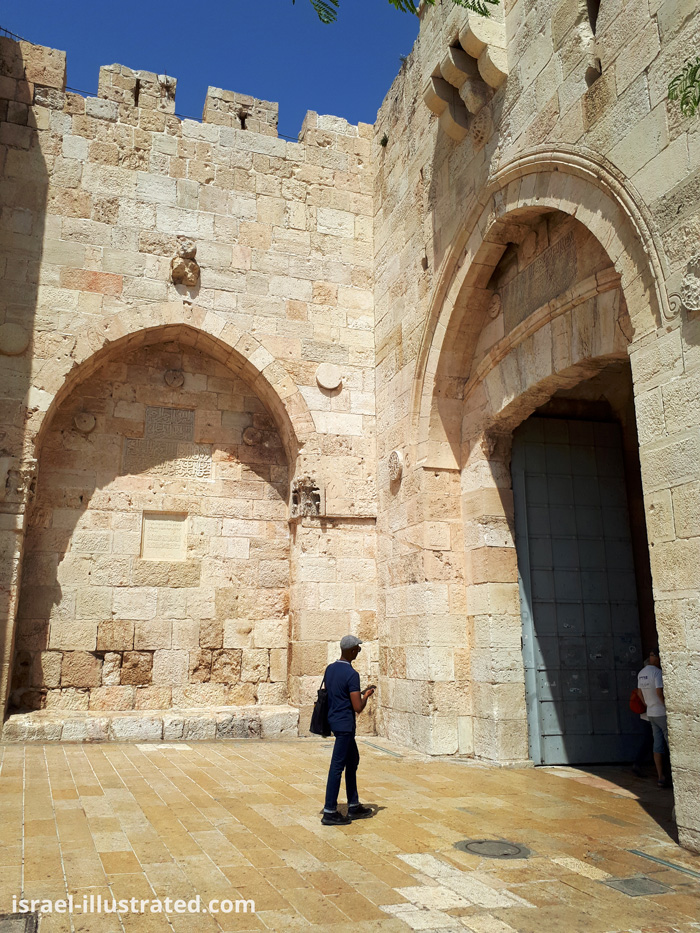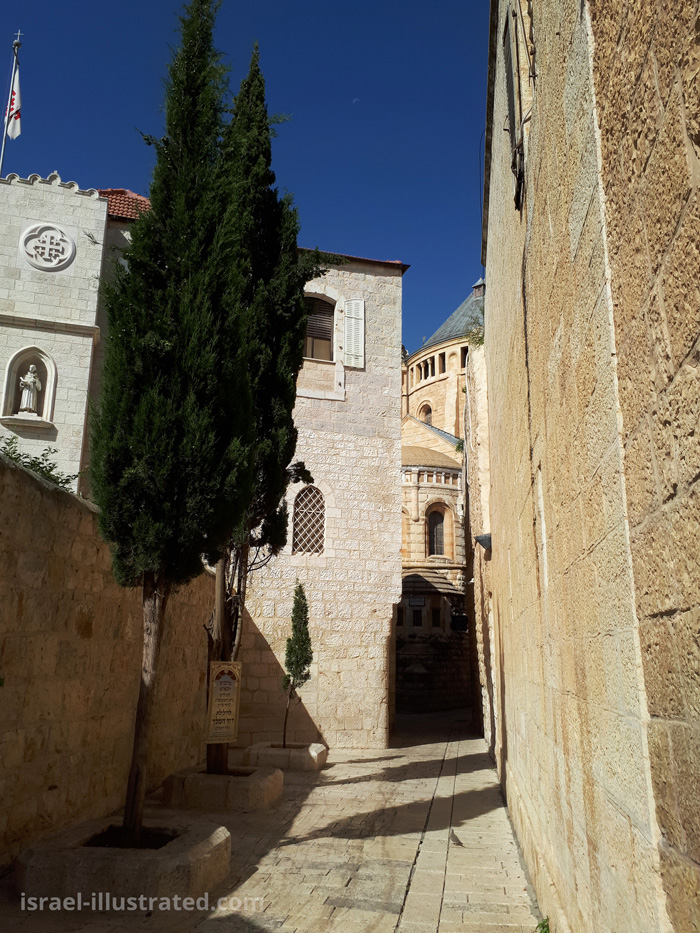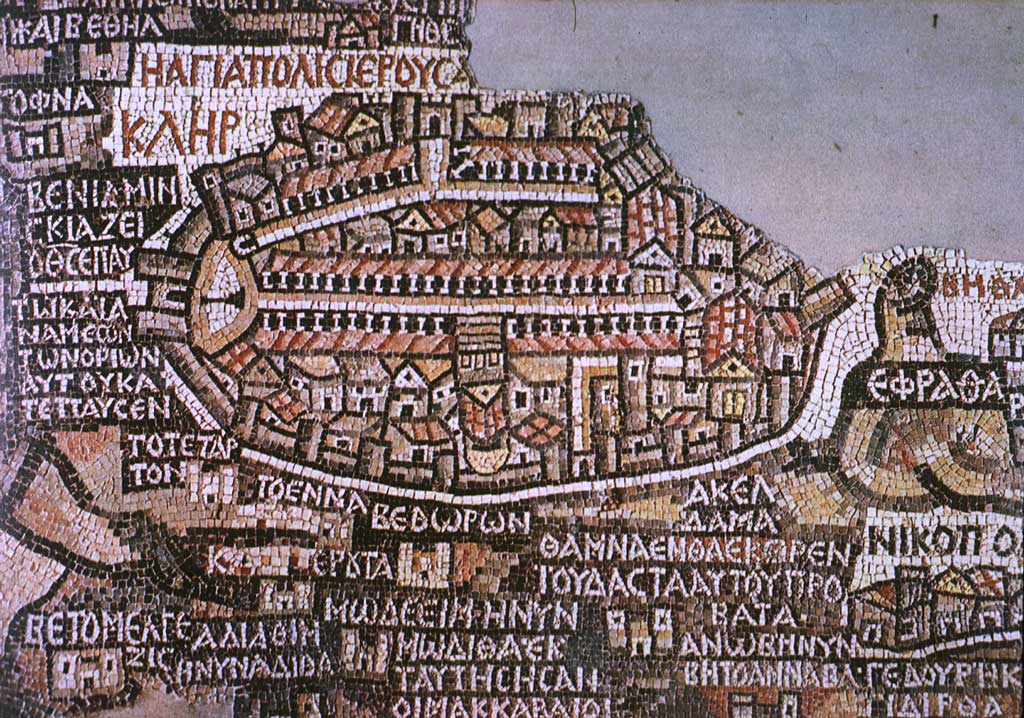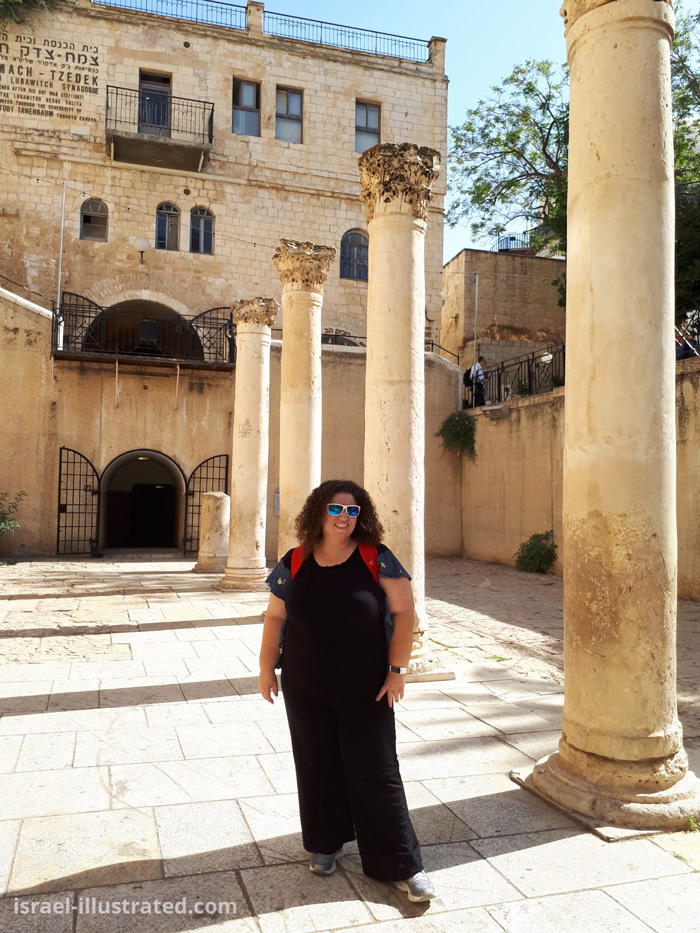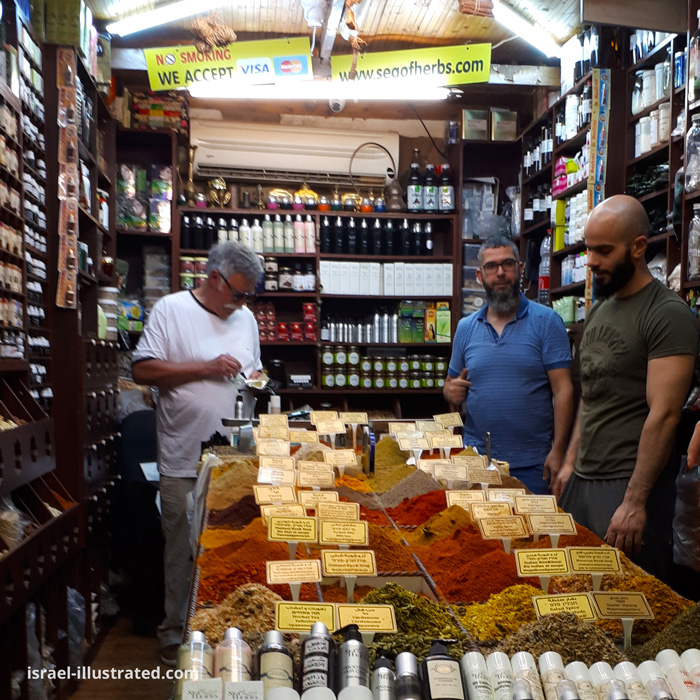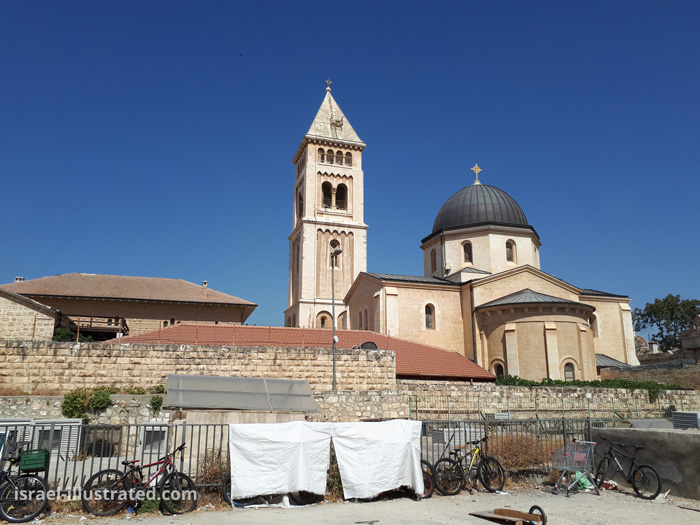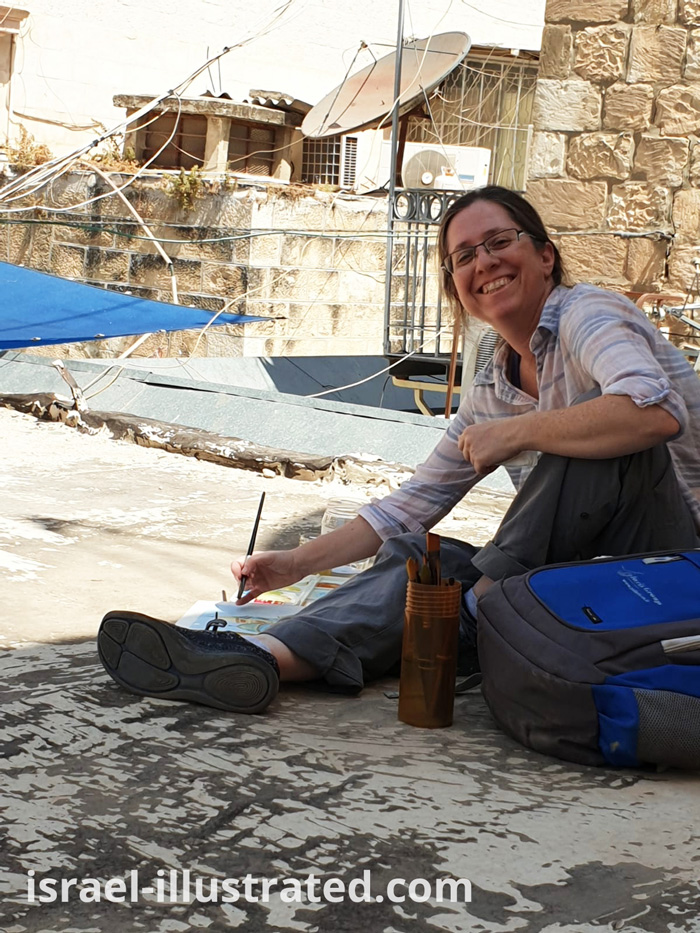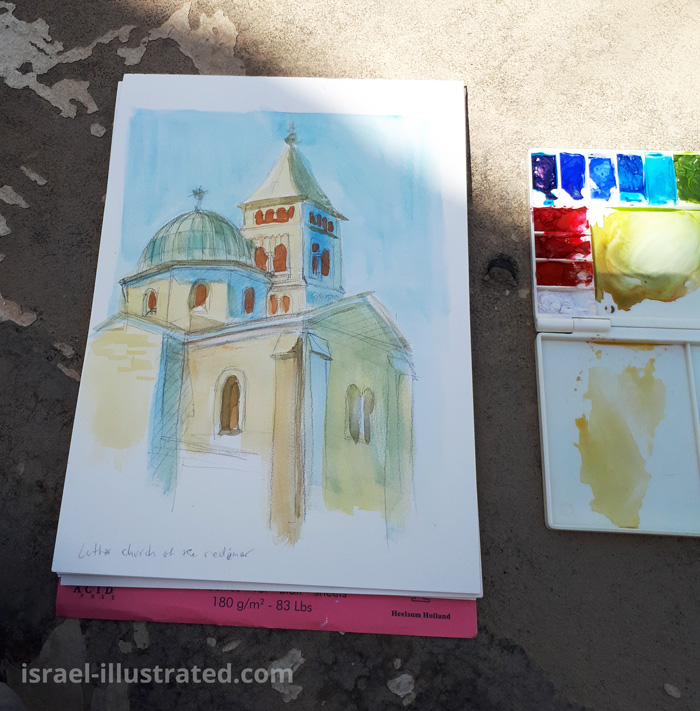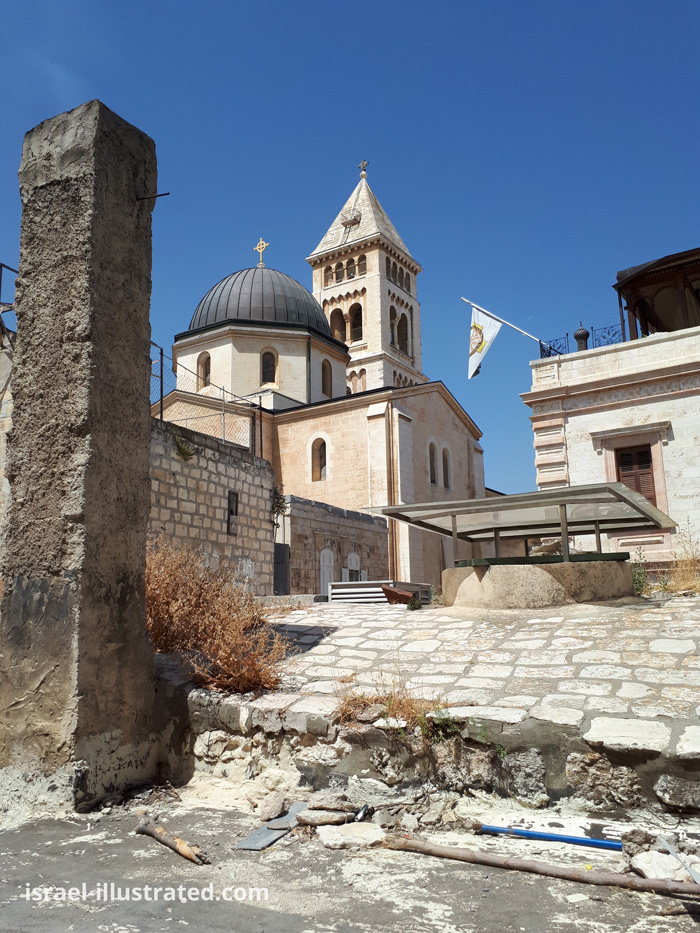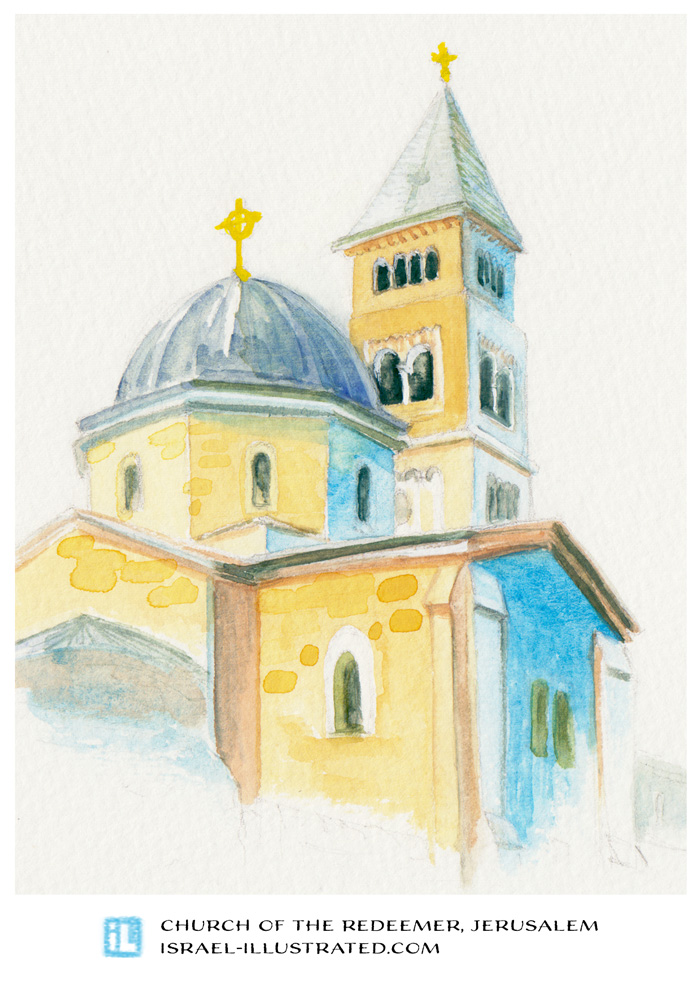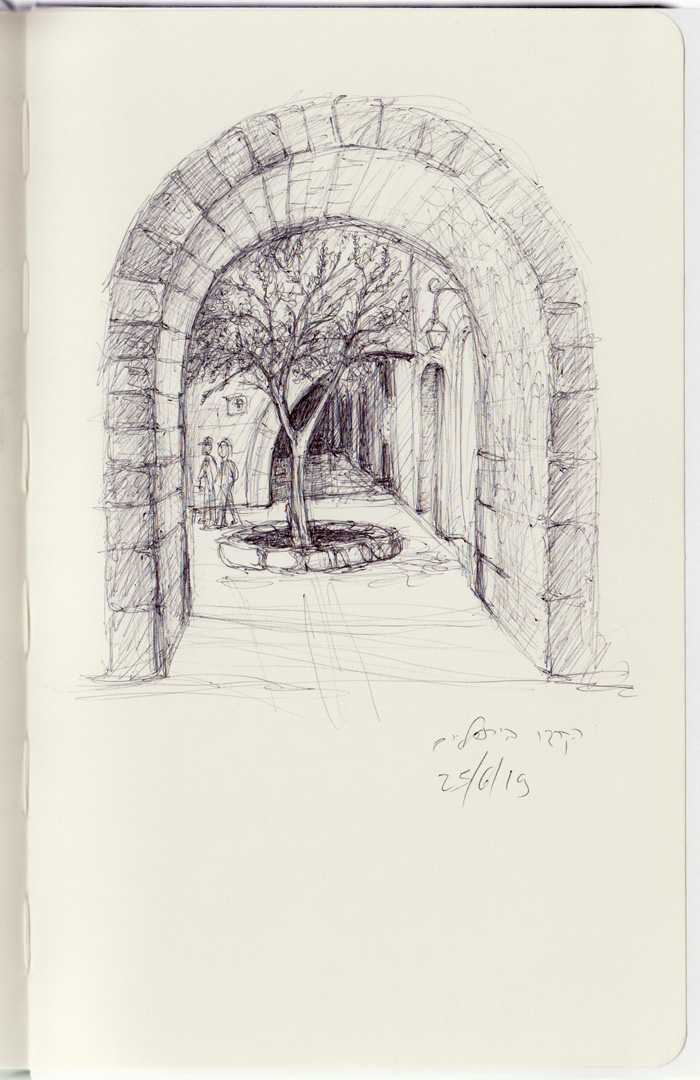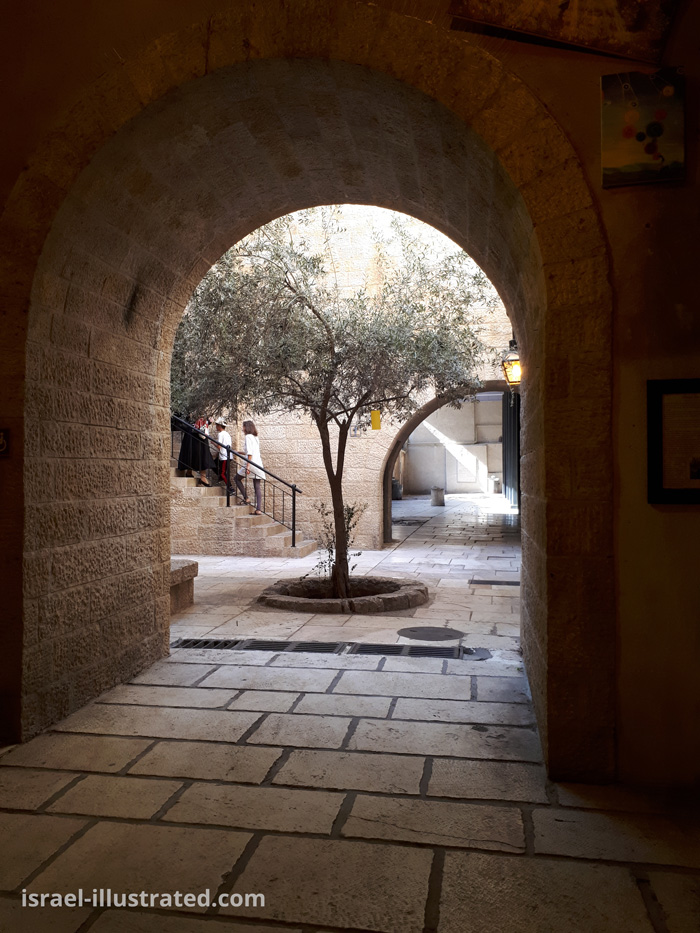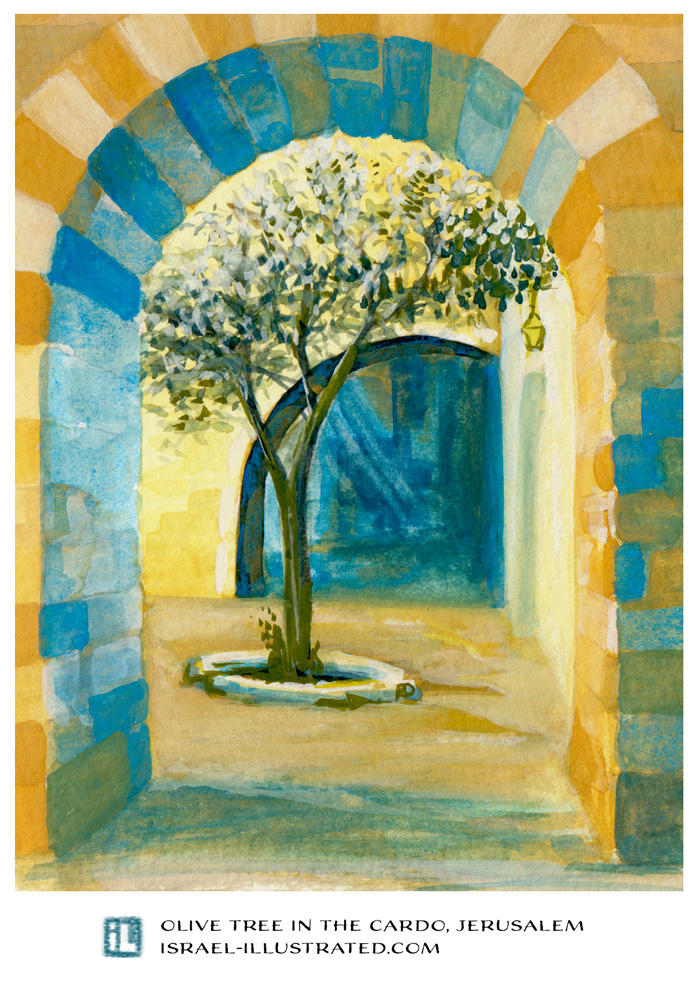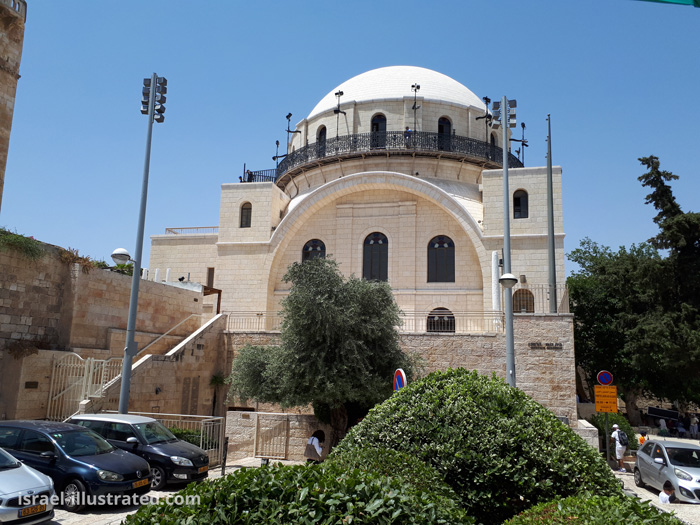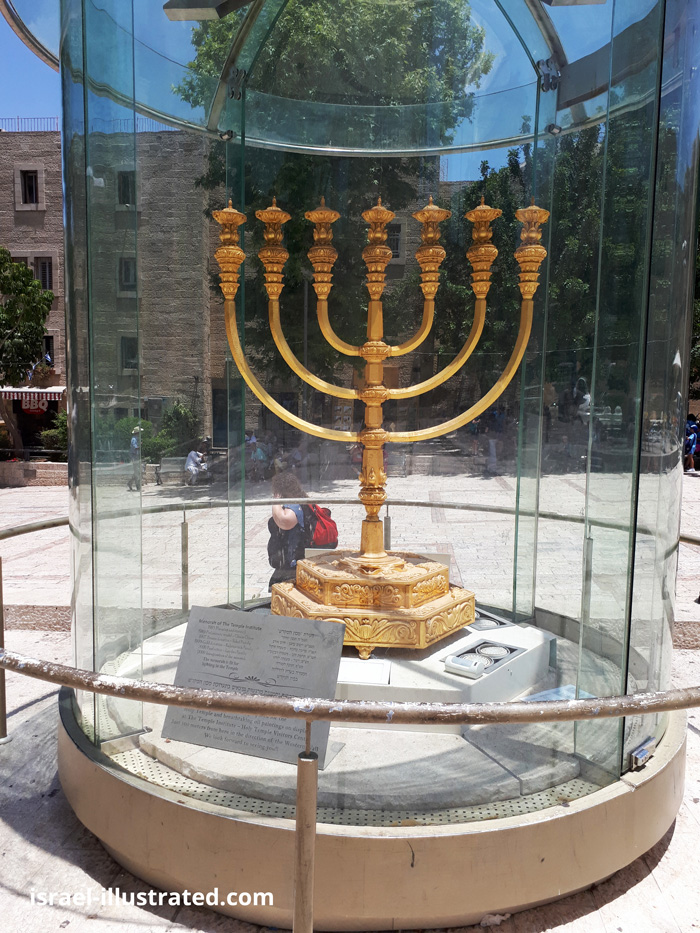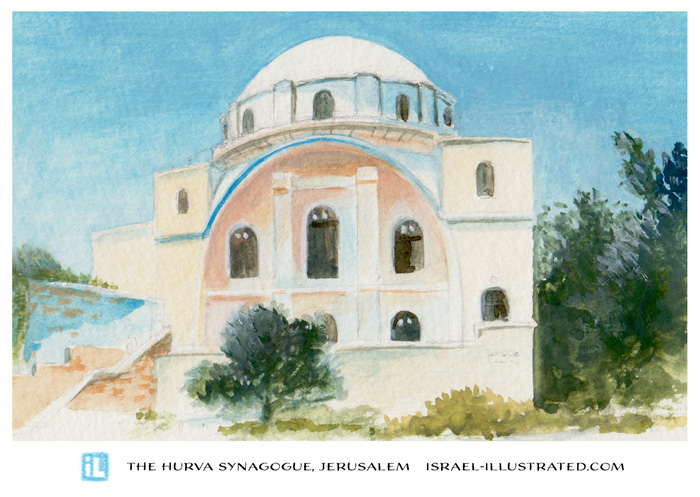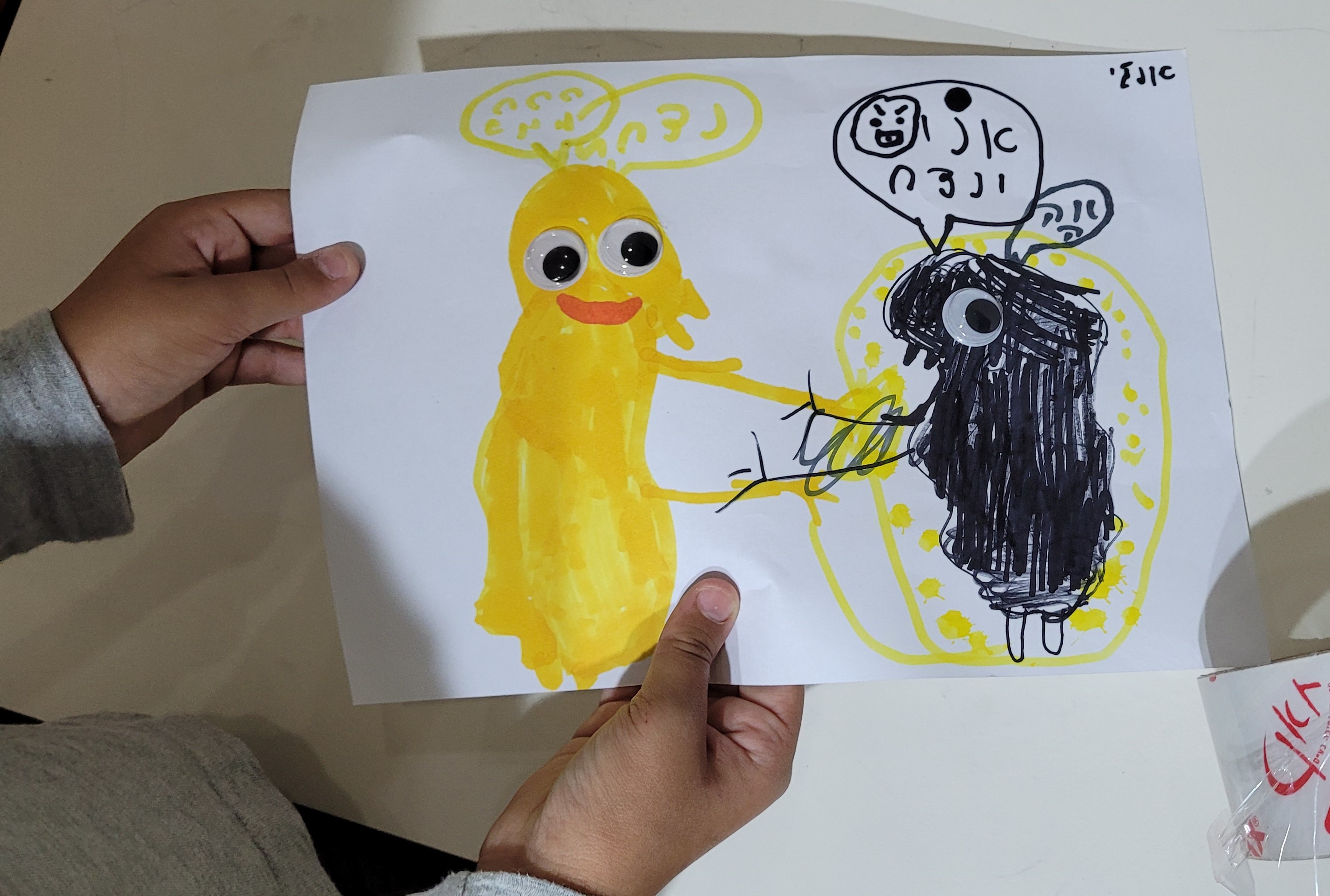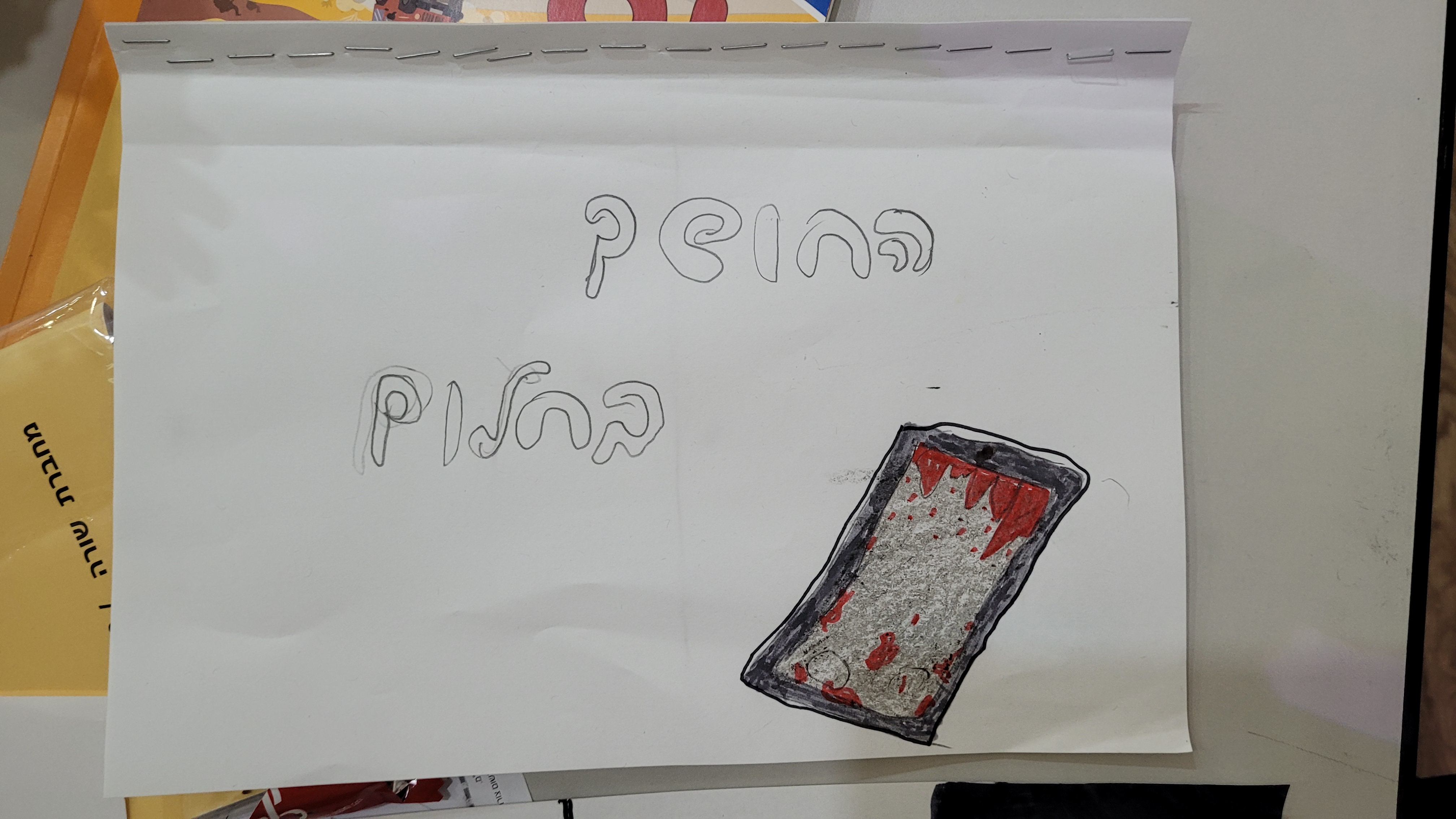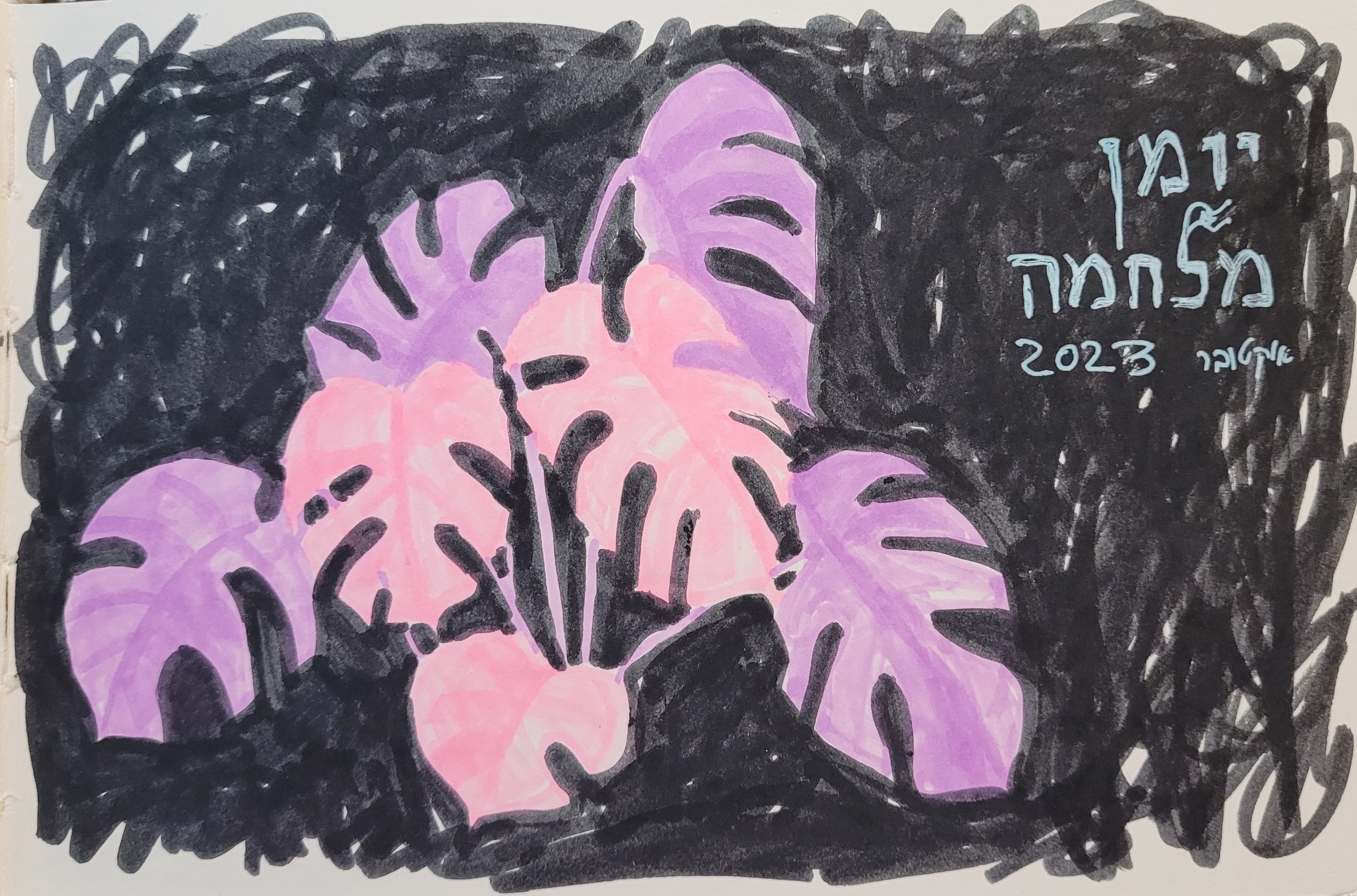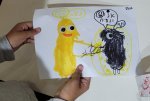- Home
- Art & Culture
- Hand Drawn Jerusalem Postcards
Three Jerusalem Postcards
Dear Reader:
I’m sending you three hand-drawn Jerusalem postcards I made on my last trip to the Old City. Here they are!
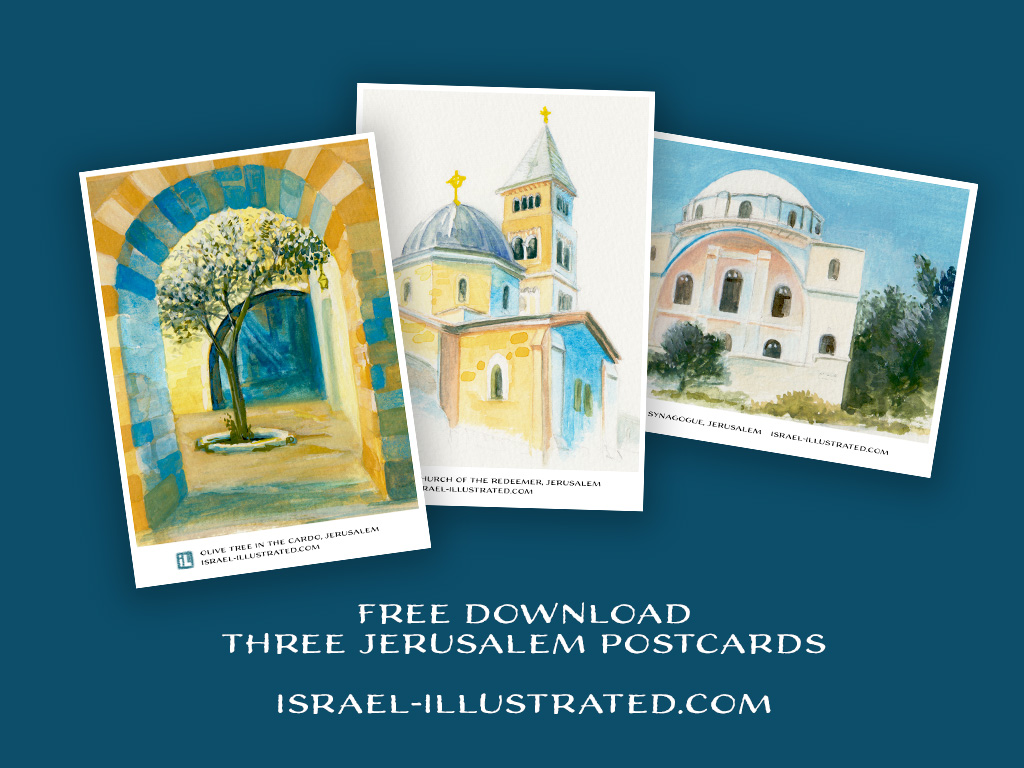
To get a free download of these postcards in print quality, just fill this form:
New postcard and coloring page! The church of Mary Magdalene
A drawing trip to the Old City of Jerusalem
These past few weeks, I’ve been traveling around Israel with my good friend and fellow animator Lena, in order to draw outside some classic plein air painting.
Tuesday came up (my free day). Lena called: “Are we going to the park to draw the ducks?”
“How about Jerusalem?” I said.
I haven’t been inside the Old City in twenty years.
If you want to draw people – go to Jerusalem in mid-day. If you want to draw landscapes and buildings, better start early, before the crowds arrive.
I got up at 5:30 to catch the train to Herzlyia where Lena and her Hubbie Leonid picked me up, and we drove up to the eternal city.
We parked at the Mamilla Mall, which is just outside Jaffa Gate. Jerusalem was still asleep, looking pink and blue in the early morning light.
(Click on any of the photos to see full size gallery)
This is more or less the route we took:
The thing is, this map doesn’t even begin to show what the Old City is like. You see, Jerusalem is Three-Dimensional.
We walked the Cardo at least three times – once down in the ancient excavation level, once on the modern-day street level, and once on the rooftop.
Another way in which this map is misleading is how it completely fails to give you an idea of the many narrow alleys and stairs that make up the maze that is the Ancient City. You might want a guide the first time you go there.
We spent maybe eight hours in just that little area, made three drawings + lunch + coffee + bathroom breaks.
Being a Tourist in My Own Country
I’ve lived in Jerusalem for four years. This was 1999 to 2003 when I was in Art school, where I met Lena. A Jerusalem Postcard I might have drawn back then will have looked very different.
I loved being in Jerusalem, but Bezalel Academy was a very intense bubble, and I never got truly connected to the city itself. I did visit the Old City on my first year there. Jerusalem is incredibly beautiful, an artist’s dream really, all parts of it, not just the ancient ones.
Then, in the summer of 2000 the Second Intifada started. Buses and cafés got bombed, and the Old City became off-limits for Israelis.
I haven’t been there since, even though it opened up again a long time ago. I’ve been to other places in Jerusalem, but the Old City was tainted for me. Really, it’s time for a restart.
Walking the narrow stone alleys, I felt as if I was in another country. Jerusalem doesn’t look like the rest of Israel; it doesn’t feel like Israel. It’s a place all of its own.
Also, no one speaks Hebrew LOL. Ok I’m exaggerating, but honestly – most people spoke to us in English. A million languages resounded in my ears as the colorful groups of pilgrims streamed all around us.
The shop keepers speak Arabic and Yiddish and English and Russian. Hebrew? Only if you insist.
I was so excited I couldn’t sit down to draw for a good two hours. I just wanted to see and see.
We decided to “look for locations”, and then come back to the spots we wanted to draw.
First Jerusalem Postcard:
The Church of the Redeemer from the Cardo Rooftop
The Cardo is an ancient Roman commercial street, dating around 130 A.D. Decorated columns line a long street that originally stretched across the ancient city, as depicted in the Madaba Map mosaic.
Today, you can walk a small part of the excavation, which gives a fairly good impression of the original space, but as I’ve noted earlier, it’s beneath the modern-day street level.
We walked thru the ancient part, thru the tunnel, and then found ourselves in the “new” cardo, which is a long, narrow, covered mall of shops and galleries. It has pretty patios where the sun streams in from above.
One had a young olive tree planted in it and we marked it for later as a good location to draw.
There are more levels of archeology going further down. We opted to go up.
I was feeling a little adventurous at this point, going further and further into the alleys, until Lena said STOP. We had crossed some imperceptible line into the Muslim Quarter and it made her uncomfortable.
Ok, I said, but I saw a sign leading to a “rooftop walk”, so I asked the spice vendor where the stairs are, and he pointed us in the right direction. I got delicious spices for rice and for meatballs. Yum.
The rooftop is just that. It’s a barren roof, connecting many of the buildings around the Cardo, with a row of air vents that mark the covered street below. It does offer a good view of the city. Great location for a James Bond Movies
The sun had come up full force. Yup. Wear that sun-screen and drink water. It was at this point where we started seeing pink tourists.
We came upon a shaded corner with a pretty view of the Church of the Redeemer. A perfect subject for our first Jerusalem postcard.
It was the end of the roof - time for a break.
Time to finally sit down and draw something!
I was a little worried because we were right outside someone’s window, but it was the only place with shade and a view.
There was a chimney inconveniently stuck in front of us, but not enough to ruin it, so we plomped down and took out our gear. No one came to shoo us away.
It was the first time I’ve tried plein-air painting with gouache. It was quite wonderful.
This is me, drawing:
And this is the sketch I made, first with pencil, and then with gouache.
I was getting into it, just having fun. I would later draw another one in the studio, based on this color sketch and a reference photo I took with my smartphone.
I’m very weary of reference photos – especially because of the colors. They’re never what my eyes see!
"Jerusalem Stone" is on a range between a terracotta-hue-pink and yellow ocher, all white-washed by a scorching bright sunlight, which makes for very deep shadows.
I went for light yellow ocher for the stone, burnt sienna for some of the detail, and cerulean blue for the shadows and skies.
The photo is right about the skies – the air was dry and clear and they did have this intense blue color.
We sat there for about an hour, then started thinking about lunch. Leonid had gone off to the Western Wall to pray. We were to meet him back at the Cardo at 12.
This is the final postcard of The Lutheran Church Of The Redeemer:
Second Jerusalem Postcard:
Olive Tree at the Cardo
We packed our gear and headed back down into the shaded alleys, mixing in with the tourists that had now filled the city.
While we waited a bit, I took out my favorite Moleskin sketchbook and Laknock 0.5 pen, and sketched the tree we had found earlier.
The light had changed considerably, and the place had filled with people now.
I was glad I took the reference photo earlier!
I finished it later, on the train back home, and made the color version from memory, because the reference photo gave me good indication of values but no help at all with the colors.
Leonid arrived and we found the restaurant – Jerusalem is famous for great food - but it hadn’t opened yet.
It's true that the churches of jerusalem are beautiful, but I wanted a Synagogue postcard too!
While we waited for the restaurant to open I took out Google maps and tried to locate the Hurva synagogue. I knew it was close by, there were signs pointing to it, but the area is so jumbled, and the GPS can’t get a reading beneath all that stone, I just couldn’t see it.
Lena and Leonid opted to wait at the gate to get a table (good thinking as it turned out) and I went on a quick reconnaissance mission to find the synagogue.
It was just off the beginning of the Cardo, but in a direction we hadn’t tried earlier.
We had lunch and went to draw.
Third Jerusalem Postcard:
The Newly Reconstructed Ha-Hurva Synagogue
Hurva in Hebrew means “ruin”. This is an old synagogue, first built in the early 18th century, destroyed twice, and now rebuilt for the third time.
They had cleared out a section of the old alleys in front of it to make a large square, and the new building looks, well, new. Which rather sticks out in this place.
I found a calming peace looking at it – it's a pleasant design, airy and light among all the detail-overload of everything around it.
The place felt a bit like Rome to me. It has a Piazza feel to it, only instead of a Bernini fountain there is a golden Menorah in the middle.
Come to think of it, this Menorah is a replica of the one depicted on Titus Gate in Rome, the one plundered from the ancient temple, and is now the official symbol of the State of Israel. Well.
I needed coffee. The coffee here is, of course, excellent. Israelis take coffee seriously, just like all the people around the Mediterranean.
We found a little terrace with a view to the interesting side of the Hurva and sat to draw the last postcard.
I had a bit of trouble with the perspective. The building is large enough to have an annoyingly subtle perspective slant to the left, but at the spot where we sat, you can’t see any of the right side of the box, leaving you with an un-even composition.
The first sketch may be accurate but it looked like a mistake, sloping off to the left. When I sat at the studio to draw the final postcard I figured I had two choices – flatten the perspective artificially, as if I was squarely in front of the building, or exaggerate what I see.
I went for the exaggeration, and the result turned out a bit like a fish-eye lens. What do you think?
All in all, I’m glad I went with gouache for these postcards. The paint has a chalky, full bodied feeling to it when it dries, and I think it goes great with the chalky stones of Jerusalem.
You can download all three Jerusalem postcards in print quality here – Just fill the form below to receive a link. I hope you enjoy them!

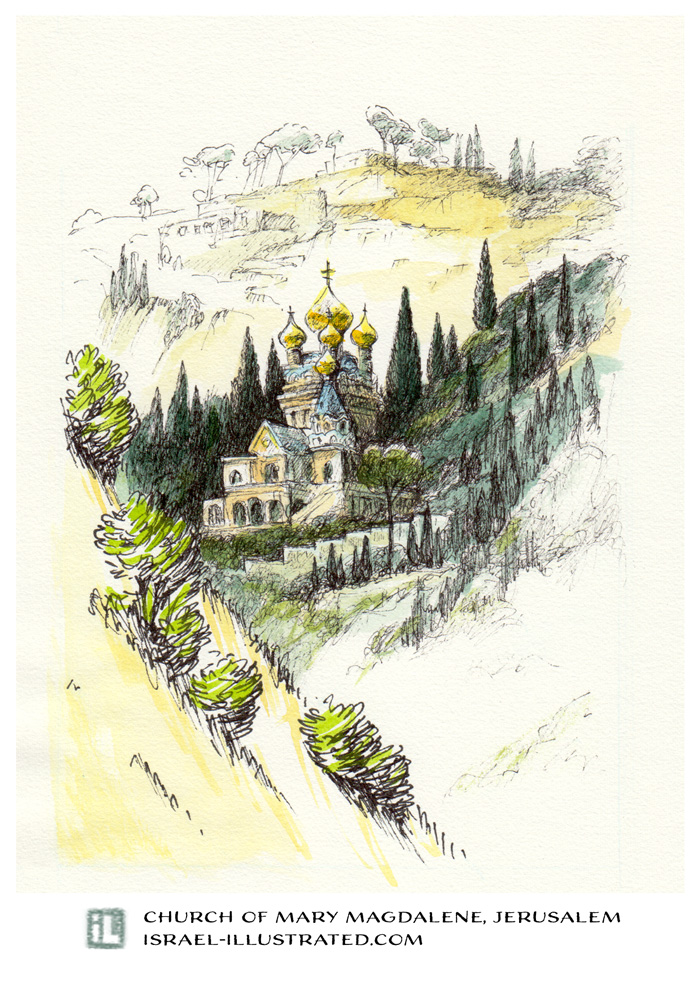
Up Next: The Church of Mary Magdalene on Mt. Olives.
See the illustration process, reference photos, and print your own coloring page!
Follow Me on Instagram:
https://www.instagram.com/nettacanfi/
